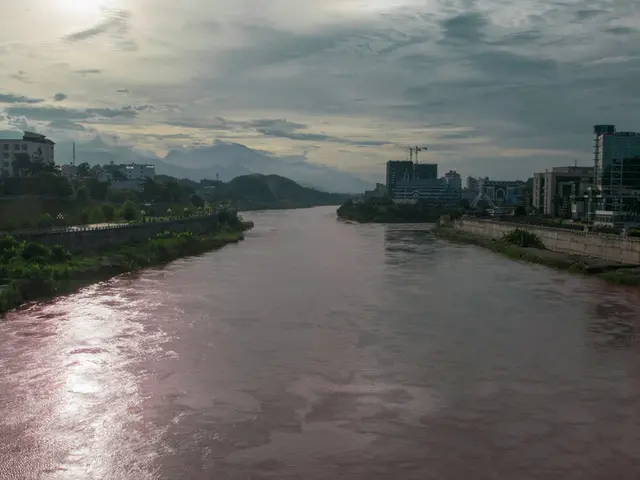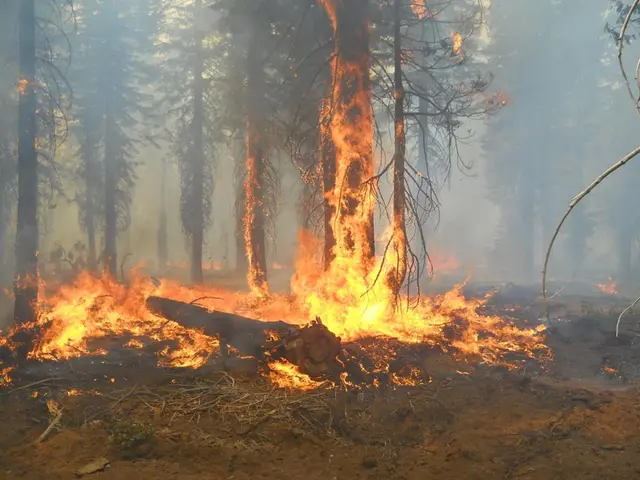Unprecedented Downpours In Delhi Result in Flooding; Uttarakhand and Himachal Pradesh Issued Flood Alerts, Kedarnath Pilgrimage Temporarily Halts Due to Potential Flooded Conditions.
Delhi-NCR and several parts of Uttarakhand are currently experiencing heavy monsoon rains, causing disruptions and safety concerns.
According to the India Meteorological Department (IMD), heavy to very heavy rains are expected in Delhi-NCR until August 16, 2025. This is due to a strong monsoon trough near Delhi and a weather system moving from the Bay of Bengal through Rajasthan, leading to continuous rainfall and temperatures around 25–35°C from mid-August onward.
The IMD has issued severe weather warnings for Uttarakhand and Himachal Pradesh due to the ongoing heavy rainfall. In Uttarakhand, a red alert has been issued for Rudraprayag, Haridwar, Dehradun, Tehri, Pauri, and Nainital, with heavy to very heavy rains expected from August 12 to 14.
Residents near rivers in Uttarakhand have been advised to move to safer zones. The State Disaster Management Authority (SDMA) in Himachal Pradesh has reported extensive damage to infrastructure, agriculture, and livestock, with losses exceeding Rs 2,000 crore. Kedarnath Yatra has been temporarily halted for three days to ensure pilgrim safety.
In Himachal Pradesh, the death toll due to rain-related incidents and road accidents since June 20 has reached 229. Authorities have warned people to remain vigilant and follow safety advisories as heavy to very heavy rainfall is expected in the coming days.
In Delhi, heavy rainfall has caused waterlogging and reduced visibility on several major roads, including the Nizamuddin flyover, Vijay Chowk, Minto Bridge, Moti Bagh flyover, and Rafi Marg. The maximum temperature in Delhi on Tuesday is expected to be 34 degrees Celsius, and the minimum temperature is expected to be 25 degrees Celsius.
Security and disaster management teams in Uttarakhand are on high alert to handle emergencies, as weather experts and district officials closely monitor mountain activities and water levels. Early morning showers in Delhi have led to waterlogging in several low-lying areas, and skies in Delhi will remain mostly cloudy with chances of hazy sunshine.
Visuals from Minto Bridge show heavy rainfall in Delhi, and authorities have advised people to stay indoors during intense showers and follow safety advisories. Ongoing landslides and road blockages in Himachal Pradesh are disrupting relief efforts.
Overall, the period up to August 16 sees a strong monsoon phase with heavy rains in Delhi-NCR, significant enough to trigger weather alerts and impact daily activities, with continued risk noted for the following days based on the weather patterns.
- In the coming days, the forecast in environmental science indicates that heavy rains will continue in Delhi-NCR, similar to the current weather pattern, due to the ongoing monsoon trough and the moving weather system.
- The heavy rainfall in Uttarakhand has highlighted the severe impact of climate change on weather patterns, leading to red alerts and safety concerns, as seen in the districts of Rudraprayag, Haridwar, Dehradun, Tehri, Pauri, and Nainital.
- The heavy rains in Delhi, Himachal Pradesh, and Uttarakhand underline the importance of weather-forecasting and disaster management in preventing loss of life and infrastructure, particularly during these critical monsoon phases.








